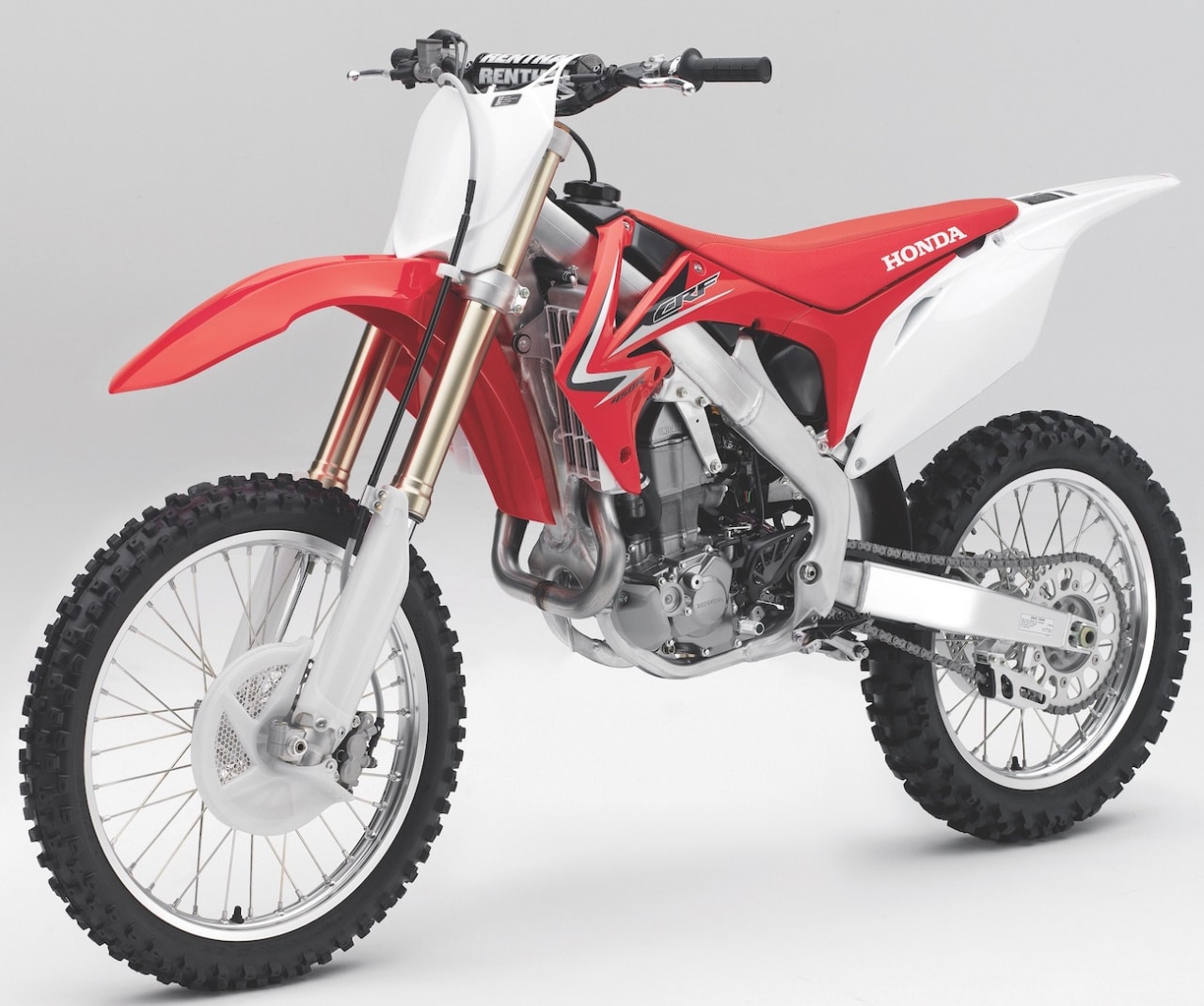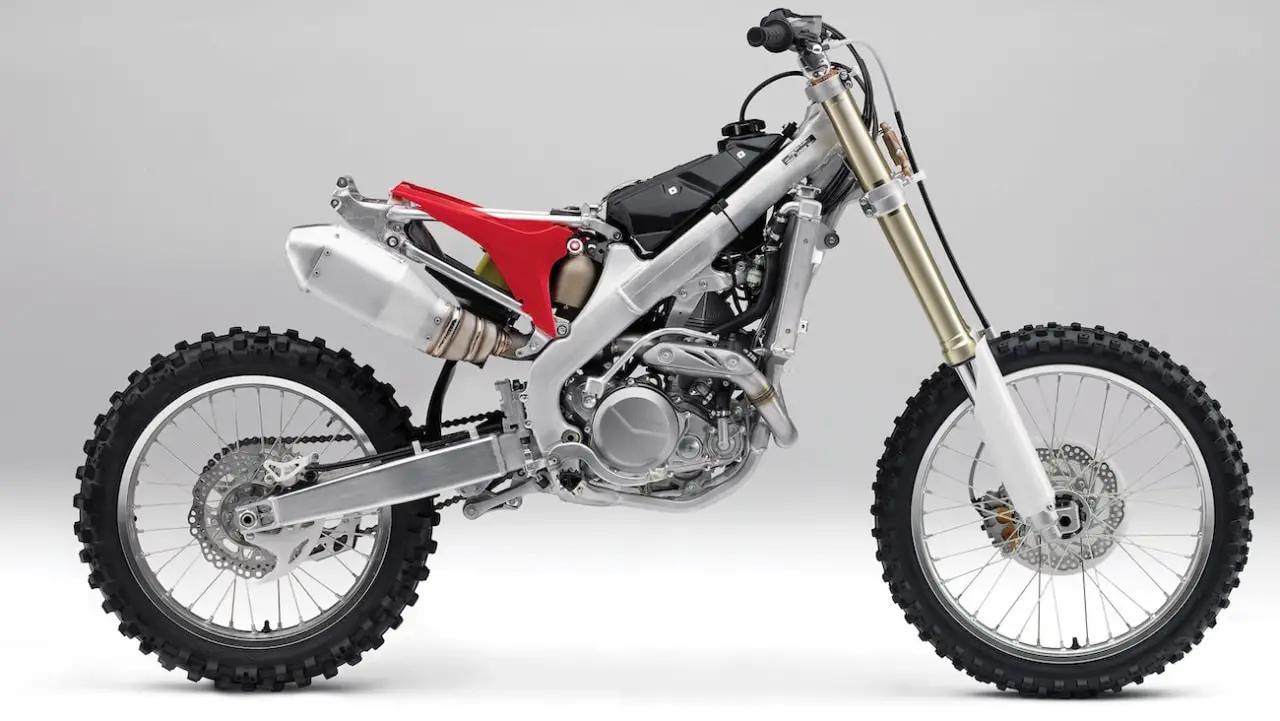ASK THE MXPERTS: WHAT DO I NEED TO KNOW ABOUT THE 2009 CRF450?
 The 2009 Honda CRF450 was a science project gone wrong.
The 2009 Honda CRF450 was a science project gone wrong.
MEMORIES OF THE 2009 CRF450
Dear MXA,
My uncle bought a brand-new 2009 Honda CRF450 off the showroom floor. He took it to our local track and flipped it. The bike was unscratched, but my uncle compressed three vertebrae in his back. He parked the bike while he waited to get better. The bike has been sitting in his garage under a sheet for nine years. I tried to get him to sell it to me back in 2010, but he refused. I gave up and bought a series of new bikes over the years, but last week I was talking to my uncle and he told me I could have his CRF. My question is, what do I need to do to build a race-ready 2009 CRF450.
First, it’s too bad that your uncle didn’t buy a 2008 Honda CRF450, because it is a much better machine. That said, here’s the quick list of changes the MXA wrecking crew made to our 2009 Honda CRf450.
FORKS: The stock fork springs are too soft. Swap the stock 0.46 kg/mm springs for stiffer 0.48 or 0.49 kg/mm springs. This will help lessen the CRF450’s tendency to dive under braking and oversteer in corners.
SHOCK: MXA’s biggest complaint about the shock was a corollary to the soft forks in that, to get the bike balanced, we had to run a lot more race sag than normal (often as much as 120mm). After we stiffened the forks by adding 0.48 springs, we installed a 146mm Pro Circuit shock linkage to replace the stock 144mm link. The link lowered the seat height and stiffened the initial part of the shock’s rising-rate curve. The stock 5.4 kg/mm shock spring is very good for riders over 170 pounds (and it can handle riders over 200 pounds). Smaller riders will need to switch to a lighter rear spring rate.
GEARING: The stock 13/48 gearing ratio (3.692) had problems jumping the gap between second and third. The quick and easy fix was to install a 49-tooth rear sprocket to lower the gear ratios to 3.769. This worked well for most Beginner and Novice riders. Pro-level riders also felt that the stock gearing was too tall but that the 13/49 setup was too low for the speed they carried, so they went to a 14/52 gear combination (3.714). It split the difference.
RADIATOR SHROUDS: The 2009 CRF450’s radiator shrouds had a pointy end on the left radiator shroud that hooked in the rider’s boots in berms. We cut the pointy part off with a jigsaw.
BRAKES: MXA test riders always removed both the front and rear brake rotor guards on CRFs. On the 2009 CRF450, the left axle spacer is molded into the front disc guard. We cut the plastic away from the spacer to eliminate the guard and keep the spacer.

WHEELBASE: For 2009, Honda moved the front wheel 17mm closer to the crankshaft (15mm in frame changes, plus 2mm in triple-clamp offset). At the same time, Honda moved the rear wheel 18mm farther away from the crank by lengthening the swingarm. That means that engine weight has been moved 33mm farther forward. The MXA test riders ran a shorter chain and moved the rear wheel as far forward in the axle slot as possible to move the weight of the engine slightly rearward.
TRIPLE-CLAMP OFFSET: Honda changed the triple-clamp offset from 24mm (2002–2007) to 22mm (2008) to 20mm (2009). We tested all the options and stuck with the stock 20mm clamps.
EXHAUST PIPES: The 2009 Honda CRF450 has a low-to-mid powerband. It revs to 11,300 rpm but is very flat after 8200 rpm. We tried four different exhaust systems, and all of them carried the power up and beyond the stock CRF’s 8200 rpm peak. They were worth the money.





Comments are closed.